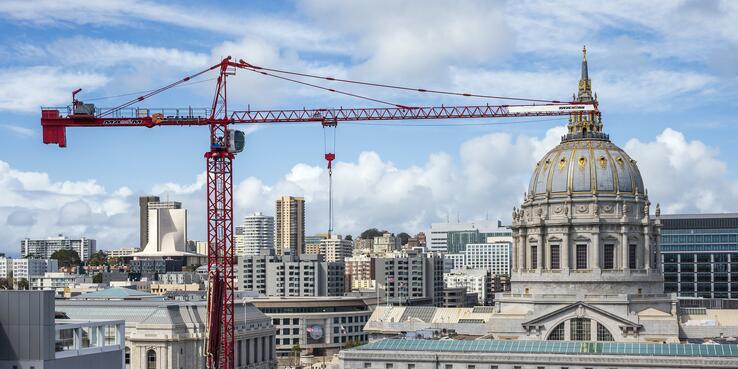This piece was originally published in the San Francisco Chronicle.
Most San Francisco residents rarely think about the City Charter, the foundational legal document that serves as the local constitution. Yet it shapes nearly every part of how San Francisco functions — from who holds authority to how city departments are structured to how decisions get made.
Adopted in its current form 30 years ago, the charter has been amended more than 100 times since, through ballot measures put before voters. At 548 pages, it is now the longest city charter in the nation, nearly 25 times the length of Seattle’s.
The charter is meant to set broad goals and powers. The administrative code is where the daily operational work of departments should be hammered out. San Francisco’s charter does this well for its fire department; just three sentences define its mission. The details are left to the administrative code — where lawmakers can adjust them as needed. By contrast, the section governing the Municipal Transportation Agency runs 16 pages, spelling out a tangled web of procedures and provisions.
What was meant to be a concise constitutional framework has become a detailed and disjointed instruction manual. Riddled with outdated, duplicative, and overly specific provisions, the charter ties the city’s hands at precisely the moment when flexibility and adaptability are needed most.
San Francisco is staring down one of the largest budget deficits in decades. Federal cuts to emergency management and health care will make that challenge even harder. Tough decisions will need to be made over the next few years to ensure that the city can build a sustainable fiscal future and continue to meet the growing needs of the community.
To do this, San Francisco must change the way it operates. This means fundamentally rethinking how the city governs itself. And that begins with an honest look at the foundation of the city government.
Public infrastructure is a perfect example. The now-infamous $1.7 million public toilet was a symptom of a system that makes even small projects painfully complex. Due to charter-mandated procedural layers and scattered responsibility, costs ballooned and timelines stretched endlessly.
The charter requires the city administrator to oversee purchasing but doesn’t give authority to enforce consistent rules, so each department develops its own protocols. And the Board of Supervisors tries to fix problems it sees by adding new legislative requirements. This complicated system creates months of back and forth between departments and higher price tags. There is no clear central authority to coordinate across departments. This lack of cohesion extends to technology, real estate, capital programs and basic asset management.
Small business owners face similar obstacles. Opening a neighborhood cafe can require navigating up to 11 different departments, each with its own rules, mandates and approval processes, many of them locked in place by the charter. Nearly 90% of city departments are embedded directly in the charter, an arrangement virtually unheard of among major cities. The result: Any change, even a small one, can require a ballot measure.
The charter’s rigidity extends to how the city makes policy decisions. The mayor or a minority of just four supervisors can bypass the normal legislative process and place measures directly on the ballot. Meanwhile, citizens need signatures from only 2% of registered voters to qualify an initiative, compared with 8% to 20% in other California cities.
The outcome is predictable: San Franciscans vote on more local ballot measures than anywhere else in the state. In last November’s election, there were 15 local propositions — compared with three in Oakland and one in San Jose. Since 2015, roughly 30% of all measures didn’t even require voter approval under state law; they could have been enacted through ordinary legislative action.
When we make it so easy for every decision to go to the ballot, city leaders can abdicate their responsibility for governing to voters. Important policy debates become politicized campaigns rather than thoughtful deliberations. And residents get stuck trying to parse the barrage of complex ballot measures to make decisions with implications that they don’t fully understand. This often leaves the city stuck with laws that sounded appealing at the time but prove ineffective or counterproductive in practice.
Charter reform isn’t about consolidating power or cutting corners. It’s about creating a government that works — one capable of building housing, maintaining infrastructure, contracting for services, and responding to crises without years of delay.
By moving operational details out of the charter and into the city’s administrative code, San Francisco could give its leaders the flexibility to reorganize departments, test new approaches and adapt to changing needs without having to ask voters for permission every time. This isn’t an abstract bureaucratic fix — it’s the difference between a government that can act and one that gets stuck in process.
San Francisco is world-famous as a hub of creativity and technology. Yet our government operates under rules written for another era. We pride ourselves on innovation, but our governance model rewards inertia.
We can no longer afford a system that prizes procedure over performance. Modernizing the charter would allow city officials to manage like leaders rather than caretakers in a museum of past compromises.
Today, policymakers are considering changes to streamline the city’s commissions for the November 2026 ballot — an effort born from last year’s voter-approved Proposition E, which established a “commission on commissions” to make city government more efficient by modifying, eliminating or combining commissions.
That’s a fine start. But we should go further. Today, SPUR published a report, Charter for Change, outlining 10 necessary reforms that, if adopted, would empower our city’s leaders, clarify lines of authority, and restore flexibility to an increasingly rigid system. These recommendations aren’t about changing what the city does; they’re about fixing how the city does it.
San Francisco has a choice: Keep patching a broken system or design a better one. Reforming the charter isn’t just bureaucratic housekeeping; it’s the first step toward a government that works for the people it serves.
